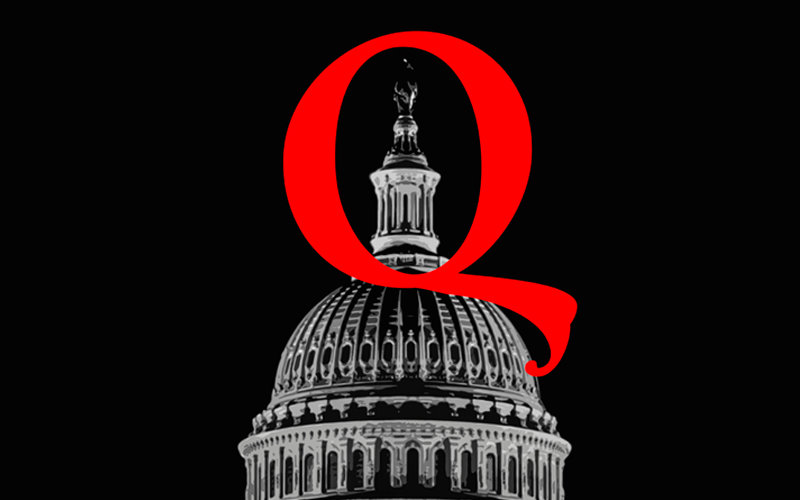
“These are unique historical times — like it or not,” said Scott Spitzer, a Cal State Fullerton associate professor of political science. “How the Biden-Harris administration handles QAnon and white supremacy groups is critical.”
Many believe that former President Donald Trump appeared to encourage and support white supremacy groups such as the Proud Boys, albeit from a distance. However, this became more pronounced during the presidential debates when Joe Biden challenged Trump to denounce white supremacy groups and used the Proud Boys as an example. Trump’s response “to stand back and stand by” made his support of the Proud Boys more apparent.
“It was a historic moment for their movement,” Spitzer said. “But these groups didn’t come from nowhere. They have been around for some time. I’d remind people not to dismiss these groups as just fringe groups that aren’t all that threatening.”
Another phenomenon, QAnon, also espouses and shares toxic and false information. Most recently, they have been focusing on the Black Lives Matter movement, sharing conspiracy theories about COVID-19 and claiming there is a secret cabal of leaders in the Democratic Party who are satanists and engage in sex trafficking.
Both white supremacy groups and QAnon members were involved in the Capitol attacks.
“Homeland Security has warned of increasing threats from domestic extremists groups,” Spitzer said. “They didn’t come out of the blue or even all of a sudden. In 2017, when white supremacy groups were protesting and rioting in Charlottesville, we saw a counter demonstrator killed and many others injured. President Trump’s response was that there were good people on both sides. These groups saw this as a signal from the most powerful office in the world to keep going. There is now more growth in white supremacy groups: Oathkeepers, Three Percenters and others.
“In fact, according to University of Chicago researcher Robert Pape who studies the demographics/backgrounds of violent, right-wing criminals, the storming of the Capitol on Jan. 6 was really different than what Pape and his colleagues had seen before. There were four important ways that this crowd was different.
“First, there was the political violence: This was not simply disorder that spun out of control.
“With the riots, it was intentional,” Spitzer said. “The insurgents who were arrested claimed they were following orders to keep Congress from certifying Biden’s win. They announced that they were proud to ‘be a patriot today,’ ‘support Trump’ and ‘never accept a criminal election.’
“Second, during the insurrection, there wasn’t as much connection to far-right militias as people think — only about one-tenth were supporters of Proud Boys or any other hate groups. Eighty-nine percent had no affiliation. However, these far-right groups continue to be a threat because they spread false information and can turn violent.
“The third variable that made this assault different is that this group tended to be older and better educated, with an average age of 40. In fact, about 40% were business owners or white-collar workers. Only 9% were unemployed.
“Finally, the insurrectionists were not mostly from the deep, red South. More than half came from counties where Biden won, and 40% lived in racially diverse areas.
“This suggests a broader, more deeply felt movement beyond just hate groups although they certainly play a role,” Spitzer said. “It was both new and not new at the same time. There have been elements of racism and anti-immigrant bias since the mid-sixties. It’s a recurring part of our politics. The difference between the Jan. 6 group and previous right-wing movements is that in the past they were trying to win elections, not overturn one that has been legitimately won using violent intimidation.”